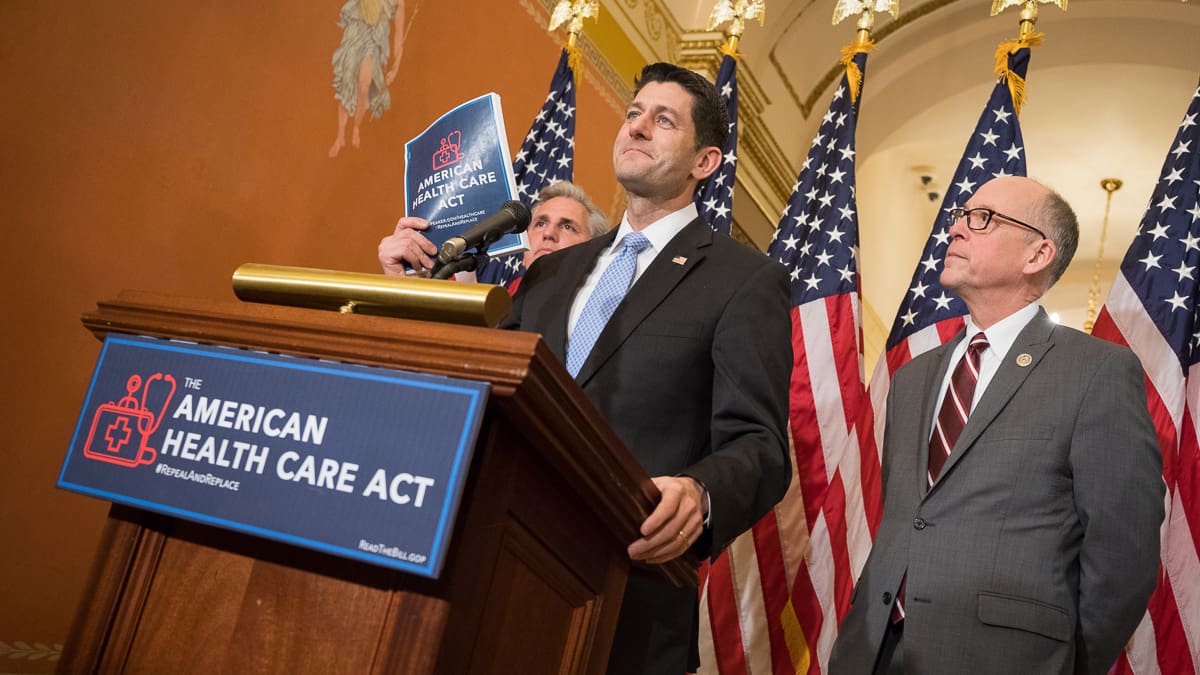This week the non-partisan Congressional Budget Office (CBO) released its official cost estimates of the House Republican’s health plan, the American Health Care Act (AHCA). The CBO is the non-partisan office that provides Congress with budget-related information, including cost estimates for proposed bills.
The CBO’s report shows the bill will be devastating: 24 million fewer Americans will have health insurance coverage by 2026. People with lower-incomes and people ages 50-64 will be hardest hit. Funding that supports coverage for these groups today will be redirected primarily to large tax cuts that benefit wealthy households, as well as insurance companies and pharmaceutical companies.
The CBO’s report is detailed. Here are the lowlights:
Dramatic increase in the uninsured
The CBO estimates that the House health plan would cause 24 million people to lose insurance coverage by 2026. For some context, the entire state of Texas is home to fewer than 28 million Texans today.
• 14 million people would lose coverage next year, and 21 million would lose coverage by 2020.
• The House plan would eventually eliminate all of the coverage gains expected under the Affordable Care Act (ACA), and the uninsured rate among non-elderly would be at or above the rate prior to the ACA.
• By the end of the decade, the uninsured rate for the non-elderly population under AHCA would nearly double, growing from 10 percent today (where it is projected to remain if the ACA stays in place) to 19 percent.

Older and poorer hit the hardest
The CBO analysis shows that the uninsured rate will climb for all adults under 65, and increase both for those who are low-income and those who are not. People who are low-income and age 50-64 will be hit hardest.

It is easy to see why the uninsured rate will skyrocket for lower-income adults age 50-64. The ACHA would dramatically and disproportionately increase their out-of-pocket premium costs in the individual insurance market (by both increasing the underlying cost of coverage and reducing the tax credits available to help them afford premiums). The CBO analysis shows an individual age 64 who earns $26,500 in 2026 would go from paying six percent of their income for premiums under the ACA to paying more than half (55 percent) of their income for premiums under AHCA.

Double whammy on deductibles
The CBO reports that under AHCA, deductibles and other out-of-pocket costs would be higher than under the ACA for individual market insurance. In other words, regardless of how much more (or less) you’d pay in premiums, you’d get skimpier coverage that leaves you on the hook for higher out-of-pocket costs. And once again, lower-income participants are hit hardest. They get a double whammy: higher overall deductibles on top of the loss of ACA cost-sharing subsidies that reduce deductibles and other out-of-pocket costs on a sliding scale.
Using the same example from above, a single American with income of $26,500 in 2026 would also see a dramatic increase in his/her deductible. Under the ACA, they would have a plan that is near the platinum level (insurer pays 90 percent of health care costs on average) because of the cost-sharing subsidy, but under AHCA, they would have coverage between the bronze and silver levels (insurer pays 60-70 percent of health care costs on average). (Today most individual-market coverage is sold in platinum, gold, silver, and bronze levels, with higher deductibles for bronze coverage and lower deductibles for platinum. AHCA gets rid of these coverage tiers.)
To get a rough idea on how much higher deductibles are between platinum and bronze/sliver levels of coverage, we looked at coverage available in San Angelo, Texas today. A person in the example above (income at 175 percent of the federal poverty level) could choose among plans with deductibles that range from $200 to $1,250, with coverage approaching the platinum tier. Deductibles are much higher for bronze and silver plans, the value of the coverage that the CBO predicts will be available, ranging from $3,000 to $6,850.
Medicaid raided to give tax cuts to well-off
The House health scheme would fundamentally alter Medicaid as we know it – capping federal Medicaid funding to states and slashing federal Medicaid spending by $880 billion –or 18 percent on average–over the next 10 years. This would cause 14 million fewer people to have Medicaid coverage nationwide by 2026 compared to current law. AHCA imposes a per-capita cap on all of Medicaid, shifting costs and risks to Texas and other states and putting coverage at risk for millions of Texas children in low-income families, and low-income seniors, people with disabilities, and pregnant women.
The CBO’s report shows a nearly dollar-for-dollar swap in cuts to Medicaid ($880 billion) and reductions in revenues to the federal government ($883 billion), most of which ($600 billion) is translated into tax cuts primarily for the wealthiest Americans, as well as drug and insurance companies.

The Congressional health care proposal is not a real plan for maintaining or increasing health care coverage in this country. It’s an ill-conceived scheme that would massively expand the uninsured population and threaten Americans’ well-being.
